Yuki snapped her fingers. “Say, before I forget; you check nav since you thawed out?”
“No, wh—” But she’d already thrown a model of the local neighborhood into my head. A filament, fine as spider silk, passed through its heart: Eri ’s trajectory. A dimmer thread, dotted and red-shifted, split from it a few lightyears in the past and diverged gradually into the future.
An initial trajectory, and a modified one.
I shrugged. “Course drift. Chimp wakes us up now and then to see if we can explain it.”
Yuki shook her head. “Drift’s still less than a degree. We’re looking at more than three degrees of divergence here.”
It clicked. “We’ve changed course.”
“Yes we have.”
I sacc’d a projection, extended the deviation out a hundred years. It passed through nothing but space. A thousand: dwarfs and Gs, potential builds but no more than if we’d just continued along our original arc. A thousand years: more of the same. Ten thousand. A hundred thousand.
“Huh.”
Two hundred thousand years from now, our current course would take us through an open cluster about thirty-five lightyears across—right into the heart of a red supergiant. Mass spec said thirty-six solar masses, twenty-four million years old. Young, so very young: a mayfly next to Eriophora , barely a whiff of hydrogen condensing in the void when we’d first shipped out.
And yet so very very old : senescent, hydrogen long-since spent, suffused in a caul of incandescent gas cast off during a profligate youth. It lived on helium now; its spectrum reeked of carbon and oxygen and just the slightest hint of neon.
Twenty-four million years dying and not yet dead.
Wouldn’t be long now, though.
This was why the Chimp had relocated: to get close to the firing chamber, to reduce latency to an absolute minimum. Because this was going to be one big nasty build, and there would be no room for error.
Sure it would be a solid petasec before that mattered. The Chimp was never one to procrastinate. Once you know what needs to be done, why wait?
“Chimp.”
“Hello, Sunday.”
I tagged the supergiant. “Are we building a hub?”
“Yes. Do you still want to be on deck when it happens?”
“Damn right I do.”
Yuki’s eyes glittered. “Kind of exciting, right?”
The window closed in my head. Yuki returned her attention to the Teredo board. “In the meantime, though, I’m going to hunt down this ice monster once and for all.”
“Feeling lucky?” I wondered.
“Mark my words.” She met my eye. “The Lord has delivered it into my hands.”
This is how they told it to me when I was a child, before I learned to talk in numbers. This is the way I still remember it best. Maybe you don’t know anything but the numbers. Tough. This is the way I remember it to you:
Imagine a hose. It doesn’t matter what’s inside: water, coolant—blood, if your tastes run to the organic—so long as it’s under pressure. A flexible tube, strained to the limit, anchored at one end.
Chop through it at the other.
It spurts. It convulses. It thrashes back and forth, spewing fluid in great arcing gouts. We call that a wormhole, of the nonrelativistic kind: fixed to a gate on one side but at panicky loose ends on the other.
It writhes that way f or centuries, millennia sometimes, bashing against spacetime until another gate boots up further down the road. That new gate calls to it, somehow. The loose end hears the hail, snaps forward across the continuum and locks on for dear life. Or maybe it’s the other way around; maybe the newborn gate reaches out with some infinite elastic hand and snatches the wormhole to its bosom in the blink of an eye. You can look at it either way. The equations are time-symmetric.
Of course, those loose ends aren’t choosy; they’ll close the circuit with anything that fits, whether we approve the union or not. If some natural-born black hole wanders into range before we boot the next stepping stone, that’s it: a dead-end marriage, monogamy unto Heat Death. The gates are designed to put up stop signs in such cases, shut down gracefully and direct any travelers back the way they came, although I don’t know if that’s ever happened. We take steps to see it doesn’t: scan the route ahead for lensing artifacts, steer clear of any reefs that might prove too seductive.
Sometimes, though, you want to run aground.
Because that’s the p roblem with building a daisy chain: each gate only goes two ways. If you don’t like the scenery when you emerge from the front door, you can either loop around and dive through the back—head on down the road, for as long as it lasts—or go back the way you came. Eriophora spins a lone thin thread round and round the Milky Way. Any gods who follow in our wake can explore this infinitesimal spiral and no more.
That’s no way to conquer a galaxy.
You need more than on-ramps and off-ramps; you need interchanges and overpasses, a way to string all your isolated single-lane superhighways together. So every now and then we seek out one of those bad-boy singularities. We find something with the right m ass, the right spin, the right charge. We build not one gate but many: powered by the singularity, but not wormholed to it. They reach further than the usual kind, they could never consummate union with the daisies in our chain: their roots may be cheek-to -jowl but their gaping hungry mouths erupt into spacetime thousands of lightyears apart, like the ends of spokes extending from a common hub.
Other webs. Other gates, built by other rocks on other paths. Those are the nodes to which they might connect. Thus do our pathetic one-dimensional threads form a network that truly spans the galaxy, that connects not just A to B to C but C to Z, A to Ω. It is these spiderwebbed cracks in spacetime that make our lives worthwhile.
Not that we ever get to enjoy the fruits of our labors, of course. Never for us, the luxury of FTL. The gods and gremlins who come after might hop between stars in an instant—but whether we’re bound for a single gate or a whole nest, we crawl .
Now we crawled toward a supernova. At the moment it wasn’t much to look at but in a few thousand years it would fall so hard off the Main Sequence that any unshielded life within a hundred lightyears would go straight back to raw carbon. It would vomit half its mass into the void; cool; collapse. By the time we arrived it would be ripe for the taking.
It would be a big build, the biggest we’d ever done. We’d have to boot up the Uterus. The Chimp would need a lot of us on deck. Twelve, maybe fifteen meat sacks all awake at once, presuming to act for the thir—twenty-seven thousand who weren’t. With a little luck and my own special influence, we could even decide which twelve or fifteen.
And for once we knew exactly where the Chimp would be.
That was when we’d take the fucker down.
We had a deadline now. So far the Lian Liberation Army had played a waiting game: gathering intel, studying the enemy’s strengths and weaknesses, laying low until some unpredictable opportunity presented itself. Now the clock was running. Now there were signposts on the road, reminding us of now-or-never creeping relentlessly over the event horizon. Suddenly revolution was imminent. There wasn’t much time to dick around.
Only two hundred thousand years.
The mission continued in the meantime. Fleets of vons went on ahead to build gates for us to ignite and abandon a century or two down the road. Occasional gremlins broke the monotony. Liquid tentacles—bifurcating and flowing like branches growing in timelapse—hurling themselves out of the portal after us, only to freeze and shatter like icicles. Something almost organic , crawling out around the edges of the hoop and taking root. A flock of schooling tiles, bright as candle-flame but so thin they nearly vanished when they turned edge-on. They swarmed and linked into mosaics, changed color and pattern and for a few moments I allowed myself a flicker of hope that they might be trying to communicate—that our long-lost descendants had remembered us at last, that they were here to take us home and please God, we could call the whole thing off. But if they ever truly spoke, it was only amongst themselves.
Читать дальше
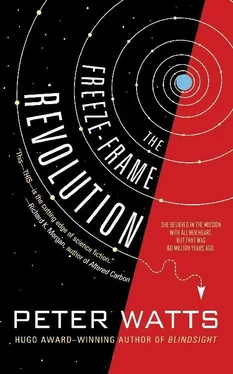
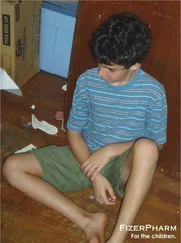


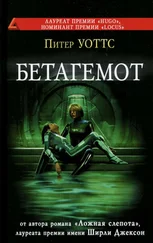

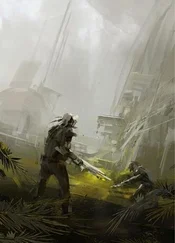


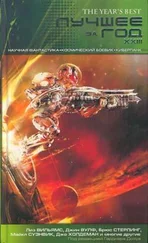
![Питер Уоттс - Водоворот. Запальник. Малак [litres]](/books/420290/piter-uotts-vodovorot-zapalnik-malak-litres-thumb.webp)